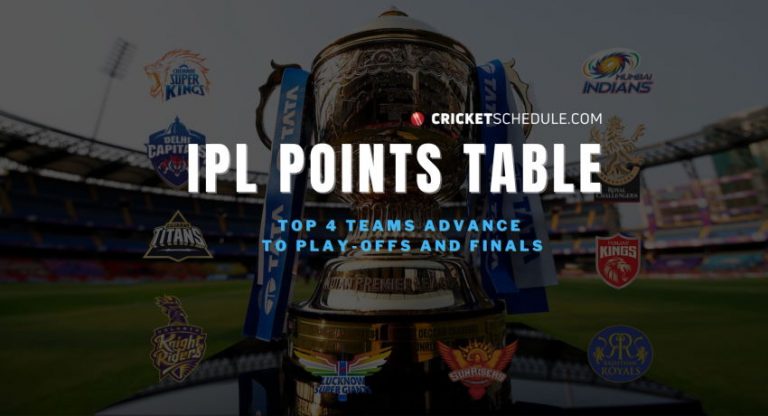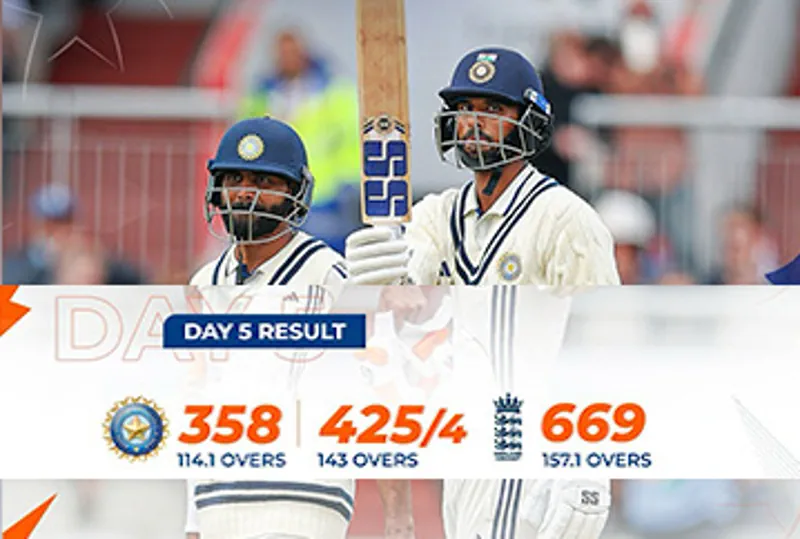
The Indian Premier League (IPL) is a high-stakes T20 cricket tournament featuring some of the best players from around the world. With eight teams competing for the coveted trophy, every point matters in the league stage. At times, teams end up with an equal number of points, and a tie-breaking mechanism is needed to determine their standings in the points table. This article delves into the history of tie-breaking scenarios in IPL points tables, exploring how they have impacted the league’s outcome.
Tie-Breaking Mechanisms in IPL
In the Indian Premier League, when two or more teams have the same number of points, the following tie-breaking mechanisms are employed in the given order:
- Net Run Rate (NRR): As explained in a previous article, NRR is the primary tie-breaking factor in the IPL. It is the difference between the average runs scored per over by a team and the average runs conceded per over.
- Head-to-Head Record: If the NRR is identical for the tied teams, their head-to-head record is considered. The team that has won more matches against the other tied team(s) in that particular season takes the higher position in the points table.
- Playoff Match: In the unlikely event that both NRR and head-to-head records are identical, a one-off playoff match is held to determine the final standings. This, however, has never occurred in IPL history.
Historic Tie-Breaking Scenarios in IPL Points Tables
Throughout the IPL’s history, there have been several instances where the tie-breaking mechanisms have come into play. Some of the most notable examples are:
- IPL 2009: In the second edition of the IPL, held in South Africa, Kings XI Punjab and Mumbai Indians both finished the league stage with 14 points. Kings XI Punjab had a higher NRR and secured the fourth spot in the points table, making it to the playoffs.
- IPL 2010: In the third season, Kolkata Knight Riders and Royal Challengers Bangalore were tied with 14 points each. RCB’s superior NRR saw them through to the playoffs, finishing third in the points table.
- IPL 2014: Rajasthan Royals and Mumbai Indians had a thrilling finish in the league stage, with both teams vying for the final playoff spot. With an identical number of points, the NRR came into play, and Mumbai Indians dramatically secured the playoff spot with a better NRR.
- IPL 2018: In an intense season, Sunrisers Hyderabad, Chennai Super Kings, and Kolkata Knight Riders were all tied with 18 points. The NRR determined their positions in the points table, with Sunrisers Hyderabad and Chennai Super Kings securing the top two spots.
- IPL 2020: The 13th edition of IPL witnessed an exciting battle for the playoffs, with Kolkata Knight Riders and Royal Challengers Bangalore having the same number of points. RCB’s better NRR ensured they made it to the playoffs, finishing fourth in the points table.
Conclusion
Tie-breaking scenarios have played a significant role in the history of IPL points tables, leading to dramatic finishes and memorable moments. The use of NRR and head-to-head records has often determined the fate of teams, adding an extra layer of excitement and unpredictability to the tournament. As the IPL continues to evolve, fans can expect more nail-biting finishes and thrilling tie-breaking scenarios, showcasing the competitive nature and unpredictability that make the tournament so enthralling.
Also Read:
- IND vs ENG: Jadeja, Sundar, Gill Hundreds Help India Earn Dramatic Draw Against England in 4th Test
- “If There Are No Bilateral Matches, Why Play in Multination Events?”: Azharuddin on India-Pakistan Asia Cup Clash
- Men’s Asia Cup 2025 To Be Held In UAE; ACC
- Ben Stokes Creates History With 11,000 International Runs And Rare 7,000 Runs-200 Wickets Test Feat




